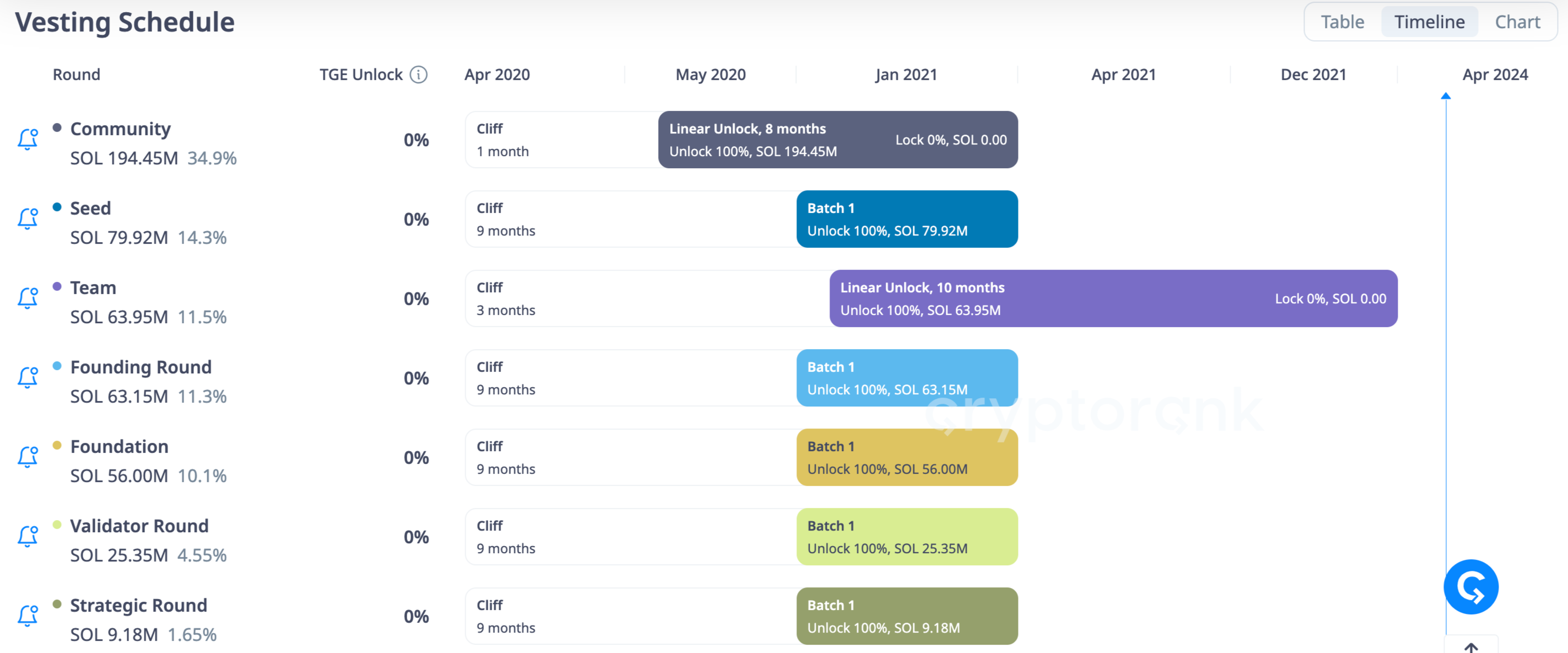What Are Vested Tokens?

This blog post will cover:
- Token Vesting Explained
- Types of Crypto Vesting
- Vesting in Crypto Vs. Traditional Finance
- The Risks of Token Vesting in Crypto
Token vesting is a complex strategy frequently used in the crypto sphere during token sales, team compensation, advisor allocations, or any scenario where token distribution requires controlled release. It is a useful instrument that helps both new and well-established projects achieve various goals.
Today, we are going to look into the technicalities of token vesting, explore its types, benefits and some potential risks.
Token Vesting Explained
In the Crypto World, token vesting means that tokens are given out bit by bit over a set period. It is often used in sales, paying teams, or giving tokens to advisors. This way, a large amount of tokens is not available right away.
When someone receives vested tokens, they do not get access to all of them immediately. Instead, they can only use a portion of the tokens at first. The rest become available gradually over time. For example, here we can see Solana’s vesting schedule.
Source: Crypto Rank
A crypto project can utilize token vesting for a number of reasons, such as:
Commitment. Vesting ensures that team members, early contributors, and other participants maintain their involvement with the project for an extended duration.
Preventing sudden drops. Releasing all tokens at once could flood the market, precipitating a drastic decline in prices due to an overwhelming supply. Vesting counteracts this by gradually introducing tokens, mitigating the effect on their value.
Cultivating trust. Vesting schedules are outlined in the project's documents. This clarity fosters a sense of confidence among investors and stakeholders, enhancing overall trust in the vision.
Types of Crypto Vesting
Let’s have a look at what types of token vesting are out there:
Time-based vesting. The team makes tokens become available in potions over a set period. For example, in Ethereum's token sale in 2014, tokens were distributed over about 42 days.
Cliff vesting. Tokens become available all at once after a set period called cliff. For instance, in the EOS initial coin offering, tokens were locked up for five years before founders could access them.
Milestone-based vesting. Tokens are released after achieving specific goals. For example, Aptos unlocked a portion of tokens after launching the mainnet.
Reverse vesting. Tokens are given upfront but can be taken back if certain conditions are not met. As these conditions are satisfied, the recipient owns the tokens officially. For example, Filecoin uses reverse vesting for its miners. Miners have to pledge a specific number of FIL tokens as collateral. These tokens are being returned to them as they fulfill their storage commitments.
Vesting in Crypto Vs. Traditional Finance
Vesting is a concept that originated in traditional finance, where vesting typically involves stocks, options, or other securities issued by companies. Due to the nature of this sphere and crypto, vesting differs in them.
First of all, traditional finance operates within a heavily regulated environment, with laws and regulations governing the issuance and transfer of securities. Crypto operates in a relatively nascent and often less regulated environment, with regulatory frameworks varying widely across jurisdictions. This regulatory uncertainty can affect how token vesting is structured and enforced.
Moreover, within the realm of cryptocurrency, token vesting commonly leverages smart contracts, introducing transparency and allowing to cut intermediaries. In contrast, traditional finance often employs legal agreements and relies on centralized entities like banks or brokerage firms to enforce vesting schedules.
Furthermore, blockchain technology offers transparency and immutability, empowering stakeholders to validate token allocations and vesting schedules via the public ledger. Conversely, traditional finance relies on centralized record-keeping systems that may lack transparency and are susceptible to errors or manipulation.
Lastly, cryptocurrencies are highly divisible, facilitating fractional ownership of tokens. This granularity allows for finer control over token vesting and distribution. In contrast, traditional securities are typically traded in whole units, posing challenges to implementing fractional vesting schedules.
The Risks of Token Vesting in Crypto
While some risks related to token vesting are common in the Crypto World, like uncertainty in the market and regulations, there are other specific concerns as well.
Smart contract risks. Token vesting often is done through smart contracts, which are prone to bugs or vulnerabilities. Risks include tokens being released too early or funds being lost.
Project risk. Token vesting is used to motivate the people involved. However, there is a risk that they might not fulfill their duties or lose interest over time. This could lead to a mismatch in incentives and harm the project's progress.
Lock-up periods. Vesting stops tokens from being dumped all at once, but it can also make it tough for recipients to access their tokens when needed. Lengthy lock-up periods can hinder their ability to sell or transfer tokens, particularly if market conditions turn against them.
All in all, in both the Crypto World and traditional finance, vesting is crucial. It is a key method for controlling how tokens are allocated, for everyone involved to be engaged, and increasing trust among those involved. As token vesting keeps shaping crypto projects, it stays central to building trust and responsibility. It fosters a positive connection between project teams, investors, and the wider crypto community.
SimpleSwap reminds you that this article is provided for informational purposes only and does not provide investment advice. All purchases and cryptocurrency investments are your own responsibility.


